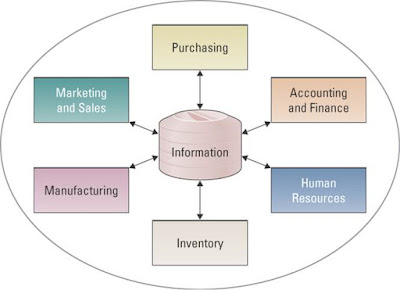MGT 300 CHAPTER 9 : ENABLING THE ORGANIZATION DECISION MAKING
LEARNING OUTCOMES :
- Define the systems organization use to make decisions and gain competitive advantages
- Describe the three quantitative models typically used by decision supports systems
- Describe the relationship between digital dashboards and executive information systems
- List and describe four types of artificial intelligence systems
- Describe three type of data-mining analysis capabilities

- DECISION MAKING
*Reasons for the growth of decision-making information system
- People need to analyze large amounts of information
- People must make decision quickly
- People must apply sophisticated analysis techniques, such as modeling and forecasting to make good decisions
- People must protect the corporate assets of organizational information
*Model is a simplified representation or abstraction of reality
*IT systems in an enterprise






- TRANSACTION PROCESSING SYSTEMS
* Moving up through the organizational pyramid users move from requiring transactional information to analytical

*Transaction processing system : the basic system that serve the operational level in an organization.
*Online transaction processing (OLTP) : the capturing of transaction and event information using technology to process the information according to defined business rules. Store the information and update existing information to reflect the new information
*Online analytical processing (OLAP) : the manipulation of information to create business intelligence in support of strategic decision making
- DECISION SUPPORTS SYSTEMS
* Three Quantitative Models used by DSSs include :
- SENSITIVITY ANALYSIS : The study of the impact that changes in one or more parts of the model have on others parts of the model. Example, repeatedly changing revenue in small increments to determine it effects on others variables.
- WHAT-IF-ANALYSIS : Checks the impacts of a changes in an assumption on the proposed solution. Example, what will happen to the supply chain if a hurricane in South Carolina reduces holding inventory from 30% to 10% ?
- GOAL-SEEKING-ANALYSIS : Finds the inputs necessary to achieve a goal such as desire of outputs. Examples, determine how many customers must purchase a new products to increase gross profit.
- EXECUTIVE INFORMATION SYSTEMS
*Most EIS offering the following capabilities :
- CONSOLIDATION : Involves the aggregation of information and failures simple roll-ups to complex groupings of interrelated information.
- DRILL-DOWN : Enables users to get details and details of details of the information
- SLICE-AND-DICE : Looks at information from different perspective.
*DIGITAL DASHBOARD : integrates information from multiple components and presents it in a unified display

- ARTIFICIAL INTELLIGENCE (AI)
*Intelligent systems is the various commercial applications of artificial intelligence.
*Artificial intelligence (AI) is the stimulates human intelligence such as the ability to reason and learn.
*Four most common categories of AI include :
- EXPERT SYSTEM : computerized advisory programs that imitate the reasoning processes of experts in solving difficult problems example is playing chess
- NEURAL NETWORK : attempts to emulate the way the human brain work. Example is finance industry uses neural network to review loan applications and create patterns or profiles of applications that fall into to categories which is approved or denied.
- GENETIC ALGORITHM : an artificial intelligent system that mimics the evolutionary, survival of the fittest process to generate increasingly better solutions to a problem.
- INTELLIGENT AGENT : a special purposed knowledge based information system that accomplishes specific tasks on behalf of its users.
- DATA MINING
*Data mining software includes many forms of AI such as neural networks and expert systems

*Common forms of Data- Mining analysis capabilities includes :
- CLUSTER ANALYSIS : a technique used to divide an information set into mutually exclusive groups such as the members of each group are as close together as possible to one another and the different groups are as far apart as possible.
- ASSOCIATION DETECTION : reveals the degree to which variables are related and nature and frequency of these relationships in the information.
- STATISTICAL ANALYSIS : performs such as functions as information correlations, distributions, calculations, and variance analysis. Forecast is the predictions made on the basis of time series information. Time-series information is the time stamped information collected at a particular frequency.




Comments
Post a Comment